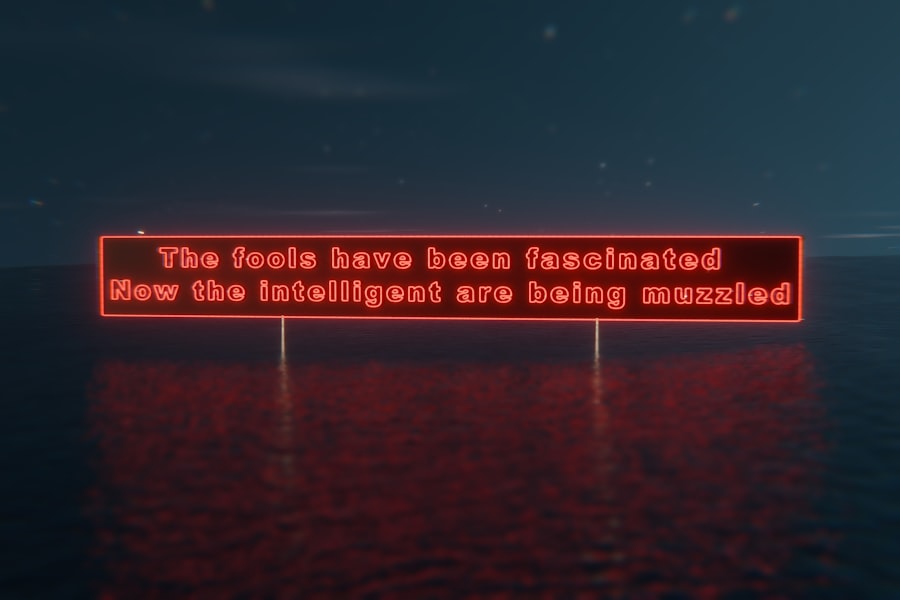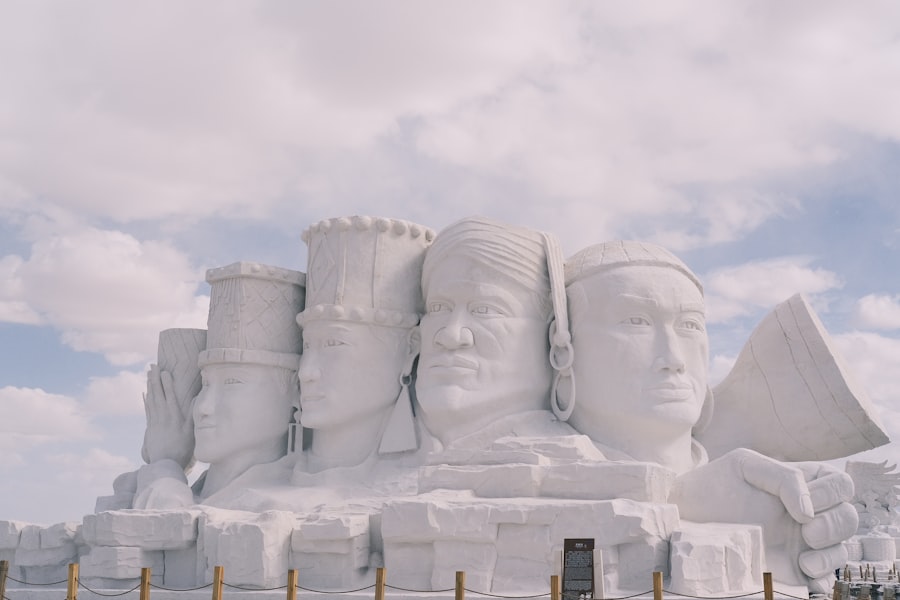Government censorship in movies is a complex and often contentious issue that has shaped the film industry for decades. It involves the regulation and restriction of film content by governmental authorities, often justified by the need to protect societal values, national security, or public morality. This practice can manifest in various forms, from outright bans on certain films to the imposition of cuts and alterations to specific scenes deemed inappropriate or offensive.
The implications of such censorship extend beyond the immediate impact on filmmakers; they also influence audience perceptions and the broader cultural landscape. As films serve as a reflection of society, they often challenge prevailing norms and provoke discussions on sensitive topics. However, when governments intervene, they can stifle creativity and limit the scope of artistic expression.
The tension between artistic freedom and governmental control raises critical questions about the role of censorship in a democratic society. This article will explore the historical context, case studies, and multifaceted effects of government censorship on filmmakers, audiences, and the film industry as a whole.
Key Takeaways
- Government censorship in movies has been a long-standing issue that has impacted filmmakers and audiences worldwide.
- Historical overview reveals the evolution of government censorship in movies, from the early 20th century to present day.
- Case studies highlight specific instances of government censorship in movies, showcasing the diverse ways in which it has affected the film industry.
- Government censorship has had significant effects on filmmakers, influencing their creative freedom and ability to express certain themes and ideas.
- The economic consequences of government censorship on movies have been substantial, impacting box office revenues and international distribution.
Historical Overview of Government Censorship in Movies
The roots of government censorship in cinema can be traced back to the early 20th century when films began to gain popularity as a mass medium. In the United States, the Motion Picture Production Code, commonly known as the Hays Code, was established in 1930 to regulate film content. This code aimed to uphold moral standards by prohibiting depictions of violence, sexual content, and other themes considered inappropriate for general audiences.
The Hays Code remained in effect until the late 1960s, significantly shaping the types of stories that filmmakers could tell. Globally, various countries have implemented their own censorship laws, often reflecting cultural and political climates. For instance, during the rise of totalitarian regimes in Europe, films were heavily censored to suppress dissent and promote propaganda.
In countries like China and North Korea, strict government oversight continues to dictate what can be shown on screen, with filmmakers facing severe repercussions for deviating from state-approved narratives. This historical backdrop illustrates how government censorship has evolved over time and continues to influence cinematic expression.
Case Studies of Government Censorship in Movies

Several notable case studies highlight the impact of government censorship on films across different eras and regions. One prominent example is “The Last Temptation of Christ,” directed by Martin Scorsese. Upon its release in 1988, the film faced significant backlash from religious groups and was banned in several countries due to its controversial portrayal of Jesus Christ.
The censorship sparked widespread debates about artistic freedom versus religious sensitivity, illustrating how government intervention can polarize public opinion. Another significant case is “A Clockwork Orange,” directed by Stanley Kubrick. Following its release in 1971, the film was linked to real-life violence in the UK, leading to its withdrawal from circulation by Kubrick himself.
The British Board of Film Classification (BBFC) later imposed strict regulations on violent content in films, demonstrating how societal reactions can prompt governmental censorship. These case studies underscore the delicate balance between creative expression and societal values, revealing the far-reaching consequences of censorship on filmmakers’ work.
Effects of Government Censorship on Filmmakers
| Impact | Description |
|---|---|
| Self-censorship | Filmmakers may avoid controversial topics or scenes to avoid government scrutiny. |
| Limited creativity | Government restrictions may limit the creative expression of filmmakers. |
| Reduced diversity | Censorship may lead to a lack of diverse perspectives in films. |
| Stifled criticism | Filmmakers may be unable to openly criticize the government or societal issues. |
Government censorship can have profound effects on filmmakers, often forcing them to navigate a complex landscape of restrictions that can stifle their creativity. Many directors and writers find themselves grappling with the limitations imposed by censorship boards, which can lead to self-censorship as they preemptively alter their work to avoid potential backlash or bans. This dynamic can dilute the original vision of a film, resulting in a product that may not resonate with audiences as intended.
Moreover, filmmakers may face significant challenges in securing funding for projects that are likely to attract governmental scrutiny. Investors often shy away from projects perceived as controversial or risky due to fears of censorship-related losses. This financial pressure can lead to a homogenization of content, where filmmakers opt for safer narratives that align with governmental expectations rather than exploring innovative or provocative themes.
Consequently, government censorship not only impacts individual films but also shapes the overall landscape of cinematic storytelling.
Impact of Government Censorship on Movie Content
The impact of government censorship on movie content is multifaceted and often leads to significant alterations in how stories are told. Censorship can result in the removal or modification of scenes that contain violence, sexual content, or politically sensitive material. These changes can fundamentally alter character development and narrative arcs, leading to a diluted message that may fail to engage audiences meaningfully.
However, this approach can be a double-edged sword; while it allows for some degree of artistic expression, it may also lead to misinterpretations or confusion among viewers who may not grasp the underlying themes. Ultimately, government censorship can create an environment where filmmakers must constantly adapt their work to align with regulatory standards, potentially stifling innovation and diversity in cinematic storytelling.
Economic Consequences of Government Censorship on Movies

The economic consequences of government censorship extend beyond individual films and can have a ripple effect throughout the entire film industry. When films are banned or heavily censored, they often lose significant revenue opportunities from box office sales and international distribution. This financial loss can deter filmmakers from pursuing ambitious projects that might challenge societal norms or provoke critical discussions.
Additionally, government censorship can impact the overall marketability of a film. In regions where strict censorship laws are enforced, filmmakers may find it challenging to secure distribution deals or attract international audiences who are wary of potential edits or bans. This economic strain can lead to a reduction in investment in local film industries, ultimately stifling growth and innovation within those markets.
As a result, government censorship not only affects individual films but also poses broader challenges for the sustainability and evolution of the global film industry.
Influence of Government Censorship on Audience Perception
Government censorship plays a crucial role in shaping audience perceptions of films and their underlying messages. When certain content is censored or altered, viewers may be left with an incomplete understanding of a film’s themes or intentions. This lack of context can lead to misinterpretations and skewed perceptions that do not accurately reflect the filmmaker’s vision.
Moreover, censorship can create a sense of curiosity among audiences regarding banned or controversial films. In some cases, this curiosity may drive viewers to seek out alternative sources or underground screenings where unedited versions are available. This phenomenon can foster a culture of resistance against censorship but may also lead to polarized opinions about specific films based on incomplete information.
Ultimately, government censorship influences not only what audiences see but also how they engage with cinematic narratives and themes.
Comparison of Government Censorship in Different Countries
The approach to government censorship varies significantly across countries, reflecting diverse cultural values and political ideologies. In authoritarian regimes such as North Korea or Iran, censorship is often pervasive and strictly enforced, with filmmakers facing severe penalties for deviating from state-approved narratives. In these contexts, films are frequently used as tools for propaganda rather than vehicles for artistic expression.
Conversely, democratic nations like the United States have historically upheld principles of free speech; however, they still grapple with forms of censorship that arise from societal pressures or lobbying groups. The balance between protecting artistic freedom and addressing community concerns remains a contentious issue in these countries. By examining these differences in approach, one can gain insight into how cultural contexts shape governmental attitudes toward film censorship and its implications for filmmakers and audiences alike.
Resistance to Government Censorship in Movies
Resistance to government censorship has emerged as a powerful force within the film industry, with many filmmakers and advocates pushing back against restrictive regulations. Various movements have arisen over the years aimed at promoting artistic freedom and challenging governmental overreach in creative expression. Filmmakers often band together to create coalitions that advocate for less restrictive policies and greater transparency in censorship practices.
Additionally, some filmmakers have employed innovative strategies to circumvent censorship altogether. By utilizing allegory or satire, they can address sensitive topics without directly confronting governmental authorities. This form of resistance not only allows for creative expression but also fosters dialogue around important social issues that might otherwise be silenced by censorship.
As resistance movements continue to grow, they highlight the resilience of artists who strive to maintain their voice amid oppressive regulations.
Future Implications of Government Censorship on Movies
The future implications of government censorship on movies remain uncertain as technological advancements continue to reshape how films are produced and consumed. The rise of streaming platforms has democratized access to content but has also raised new challenges regarding regulatory oversight. Governments may seek to impose stricter controls over online content distribution as they grapple with issues related to misinformation and harmful material.
Moreover, as global interconnectedness increases through digital platforms, filmmakers may find themselves navigating an even more complex landscape of cultural sensitivities and regulatory frameworks across different countries. This evolving environment could lead to heightened tensions between artistic freedom and governmental control as filmmakers strive to reach diverse audiences while adhering to varying standards.
The Role of Government Censorship in Shaping the Film Industry
In conclusion, government censorship plays a pivotal role in shaping the film industry by influencing what stories are told and how they are presented. While it aims to protect societal values and maintain public order, it often comes at the cost of artistic freedom and creative expression. The historical context reveals a long-standing struggle between filmmakers seeking to push boundaries and governments attempting to regulate content for various reasons.
As filmmakers continue to navigate this complex landscape, they must balance their creative visions with the realities of governmental oversight. The ongoing resistance against censorship highlights the resilience of artists who strive for authenticity in their work despite external pressures. Ultimately, understanding the dynamics of government censorship is essential for appreciating its profound impact on cinema and its ability to reflect and shape societal values over time.
Government censorship in movies has been a topic of significant debate, as it raises questions about freedom of expression and the role of the state in regulating content. An interesting perspective on this issue can be found in an article discussing the broader implications of censorship in media. For more insights, you can read the related article on this topic by visiting In The War Room. This article delves into the historical context and current trends in government censorship, providing a comprehensive overview of how it affects the film industry and the creative freedoms of filmmakers.
CHECK THIS OUT! 📽️🎞️ Hollywood’s Secret War: How the CIA Rewrote Movies
FAQs
What is government censorship in movies?
Government censorship in movies refers to the practice of a government or its regulatory body restricting or controlling the content of films that are released or shown within its jurisdiction. This can involve the removal or alteration of specific scenes, dialogue, or themes that are deemed to be inappropriate or objectionable according to the government’s standards.
Why do governments censor movies?
Governments may censor movies for various reasons, including concerns about national security, public morality, political sensitivity, religious beliefs, and cultural values. Censorship may also be used to protect certain groups from discrimination or to prevent the incitement of violence or social unrest.
Which countries practice government censorship in movies?
Many countries around the world practice some form of government censorship in movies, including China, Iran, Saudi Arabia, Singapore, and North Korea. However, the extent and strictness of censorship can vary widely from one country to another.
What are the effects of government censorship in movies?
Government censorship in movies can have a significant impact on the creative freedom of filmmakers, as well as on the diversity and availability of films for audiences. It can also lead to the suppression of certain ideas or perspectives, and may limit the ability of filmmakers to address important social or political issues.
How do filmmakers respond to government censorship in movies?
Filmmakers may respond to government censorship in movies by self-censoring their work to comply with regulations, by challenging censorship through legal means or public advocacy, or by seeking to distribute their films in countries with less stringent censorship laws. Some filmmakers may also use allegory or metaphor to convey their intended messages in a way that circumvents censorship.




